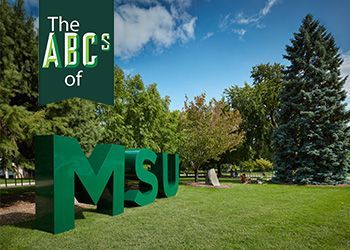President's Message: Building our global talent network

For 160 years, Michigan State University has been a leader in developing top-level talent that translates into successful and meaningful careers and meets the challenges of the day.
I’ve had many opportunities in recent months to speak about talent and Michigan State’s role in attracting and fostering talent. It was one focus of this year’s Detroit Regional Chamber Mackinac Policy Conference, which I attended in May. It also was the focus of the economic sector report I helped release at the conference on Mackinac Island, along with my fellow University Research Corridor (URC) presidents from the University of Michigan and Wayne State University.
Each year at the conference we release a study of our collective impact on a Michigan economic sector. This year our URC report, written by Anderson Economic Group of East Lansing, is titled Attracting, Fostering, and Inspiring Talent for the Global Economy. You can find it, along with prior reports and a wealth of other information, at urcmich.org.
The report analyzes the unique assets our three research-intensive universities bring to Michigan and the talent-associated benefits we produce. Together we award more than 32,000 degrees each year, including nearly 13,000 advanced degrees. More than a third of the degrees conferred are in high-demand fields, including medicine and engineering.
The URC universities collectively spend $2.1 billion annually on research that helps attract and sustain many of the nearly 12,000 world-class faculty we employ?and the more than 35,000 graduate students we enroll. The presence of those talented scholars and researchers elevates our undergraduate programs.
The URC report also discusses our extensive and global talent networks, which include our combined 1.2 million living alumni, half of whom reside in Michigan.
I often discuss the sort of talent MSU needs to develop in terms of T-shaped skills, which is just a way of visualizing the sorts of skills graduates increasingly need to pursue 21st-century careers. In short, we aim to produce graduates who can enter the work force with skill sets deep in specialized knowledge (the vertical stroke of the T) and broad in connective skills, such as communication and teamwork
(the horizontal stroke).
We are committed to preparing Michigan State graduates to understand complex situations, work across boundaries, make connections between different disciplines, and communicate their knowledge effectively to diverse audiences.
We discussed this concept in depth earlier this year when Michigan State and IBM hosted scholars, employers, and others at the second annual T-Summit. We’re developing a common language to talk about the skills needed for the jobs of today and tomorrow, and we’re laying the groundwork for the changes higher education must make in order to continue to produce such talent.
Working with our colleagues and partners and with members of our own talent networks, including you, I’m confident Spartans Will.



